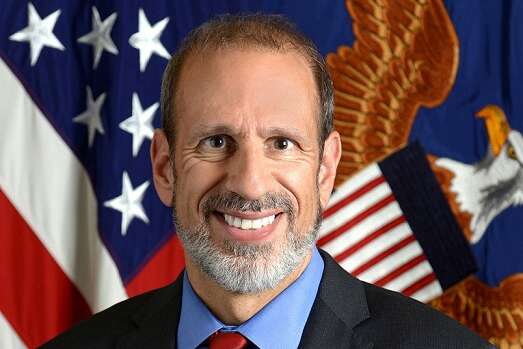The DoD Reporter’s Notebook is a weekly summary of personnel, acquisition, technology and management stories that may have fallen below your radar during the past week, but are nonetheless important. It’s compiled and published each Monday by Federal News Network DoD reporters Jared Serbu and Scott Maucione.
The Pentagon is preparing for its future without a chief management officer position, a role Congress eliminated in this year’s defense authorization act.
Michael McCord, the nominee to be the next Defense Department comptroller, said if he’s confirmed, part of his job will be to flesh out how his position and a handful of other top DoD roles will absorb the CMO’s duties.
“One of my earliest tasks would be to sit down with Deputy Defense Secretary Kathleen Hicks and others as they are confirmed in that space,” McCord told the Senate Armed Services Committee. “The Cost Assessment and Program Evaluation director who’s been nominated and the chief information officer, I believe, has not been nominated yet; all those players would have a role in the structure that former Deputy Defense Secretary David Norquist left.”
McCord, who served as comptroller under President Barack Obama as well, said his focus would be making sure that the duties that remain with the comptroller make the department more effective.
“We have doubled down to the point of maybe overdoing it over the last decade on trying to make it focused only on efficiency and cutting billets,” McCord said. “We need to focus more on outcomes and effectiveness and if that role stays with comptroller, I would need to hire a somewhat different type of workforce and move them over if they haven’t left the department from the CMO office.”
Norquist directed a plan to dissolve and redistribute the CMO’s functions a week before the end of the Trump Administration. It strengthened the comptroller’s office to take on business process issues as well as financial issues, and also made the comptroller into DoD’s performance improvement officer.
“Building on the gains we have made with the financial statement audit and development of Advanced Analytics for Executives tool, [the department will] expand the role of the undersecretary of Defense (Comptroller) to improve accountability and performance in DoD business operations,” Norquist wrote.
Since taking office Hicks has not said if she will continue Norquist’s plan or distribute responsibilities differently. McCord made it seem like there would be a meeting of the minds on the issue once more nominees were in office.
Congress got rid of the CMO position because it was disappointed in its efforts to fundamentally change the business practices of DoD.
The Defense Business Board gave Congress a handful of options to replace the CMO, including vesting more power in the deputy defense secretary position or creating a second deputy defense secretary, but ultimately Congress decided to simply dissolve the position and gave DoD a large amount of discretion on how it would go forward. — SM
DoD can’t calculate improper payments to workforce because of ‘unreliable’ methods at DFAS
In this space last November, Federal News Network noted that DoD had just reported a massive increase in improper payments to its civilian workforce for 2020, owing mostly to what Pentagon financial officials called a “new sampling plan and testing methodology.” But as it turns out, the latest estimate — $5 billion — is really more of a guess, because the new methodology itself is unreliable.
That’s according to the DoD Inspector General’s latest review of the Pentagon’s improper payments, which found the department is failing to comply with federal improper payment reporting requirements for the ninth year in a row.
The IG found the Defense Finance Accounting Service DFAS was using ill-conceived methods to detect error rates for both its civilian and military employees. But the civilian area is where the department reported the biggest year-over-year increase in 2020. It estimated 8% of payments to civilians were either too high or too low last year — a massive jump from the 0.14% estimated improper payment rate for 2019.
But auditors now say those numbers are untrustworthy for at least two reasons. First, DFAS used garbled data to calculate the error rates for both military and civilian employees.
“By using an unreliable methodology to calculate the gross pay amounts for the population, DFAS personnel recognized the amounts did not match the [leave and earnings statements] and modified the amounts in the sample results population, creating variances in the gross pay amounts used to calculate the improper payment estimates,” according to a report the IG issued last week.
Another problem happened when the department, apparently by mistake, left its civilian mariner workforce completely out of its calculations for the civilian pay accounts; those paychecks alone account for $538 million. And the oversight happened in spite of the fact that the IG noticed the same problem two years ago, and in spite of the fact that DoD agreed to correct the error at the time.
The department told auditors it really has fixed the problems this time, and the revised methodologies will be reflected in its 2021 financial statement later this year.
Overall, the IG found the department is falling short on two out of the six requirements in the Payment Integrity Information Act. The employee pay issues caused it to fail the requirement to publish reliable estimates of its improper payments.
The second failure came about because the department didn’t meet its improper payment reduction target of 0.76% for military health benefits. DoD said the majority of those problems happened because one of its TRICARE contractors didn’t process health claims accurately. —JS
DoD fighting an uphill battle with service member vaccinations
The Defense Department is concerned about the number of service members who are willing to get the coronavirus vaccine, as many still refuse to get the shot.
With just 27% of military personnel fully vaccinated, DoD said it does not have any issues with supplying the vaccine, only with getting troops to take the vaccination.
In response to a question from Sen. Thom Tillis (R-N.C.), during a Senate Armed Services Personnel Subcommittee hearing about whether the president should mandate the vaccine, Dr. Terry Adirim, acting assistant secretary of defense for health affairs, said:
“I appreciate that question. I never thought I’d have those words come out of my mouth. But this is something that’s been a concern for us in how do we encourage and engage with our service members for them to accept vaccination. It’s been tough and I think those who want vaccination have been able to get it.”
Adirim said DoD is using every avenue available from the installation level up to engage with those who are hesitant about the vaccine.
“What we’re finding is that even those who were in the earlier tiers of the prioritization scheme are slowly starting to accept vaccination,” Adirim said. “It’s now four-five months after we started vaccinating and I think a large proportion of our service members as well as other DoD beneficiaries have said, ‘You know what, I’d like to wait and see what happens.’”
DoD has done multiple townhalls with senior leaders explaining the effectiveness and safety of the shot.
Service members are not mandated to take the shot because it is only approved those emergency-use authorization.
Adirim said DoD is not at this time considering making the vaccine mandatory.
DoD has said in the past that about one-third of service members have been declining to get the vaccine. — SM


Comments are closed.